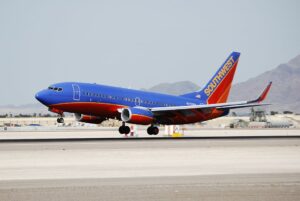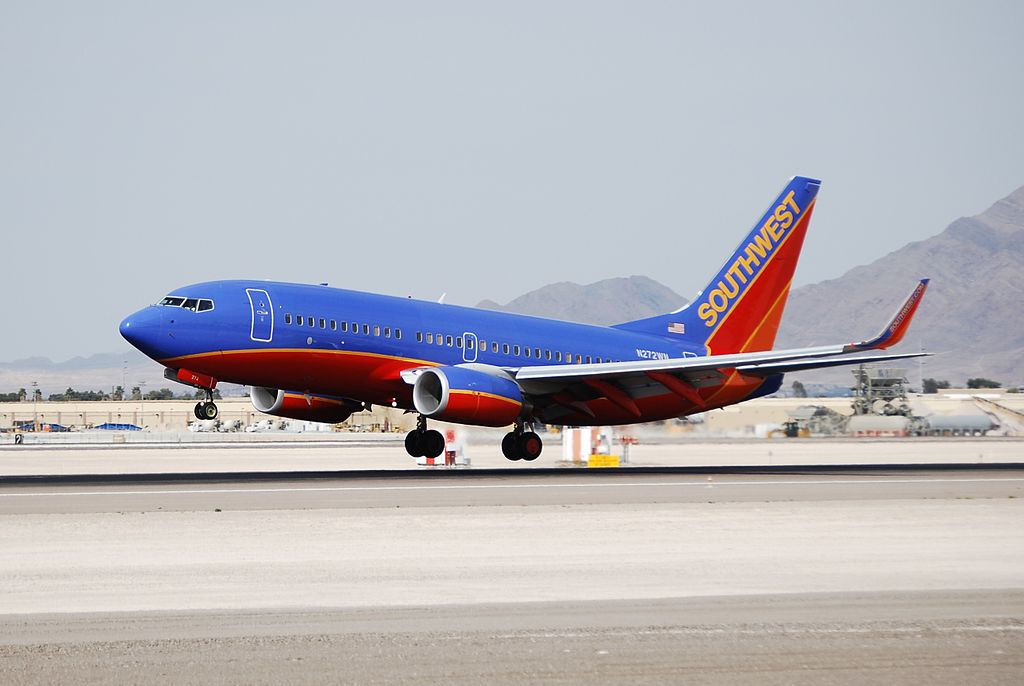Did Boeing Conceal the Fatal Flaw In Its 737 Max Planes?

The cause of the crash of Lion Air Flight 610 has yet to be determined, but The Wall Street Journal has reported that Boeing may not have disclosed a potential design flaw in the operating systems of some of its 737 MAX planes. Boeing has said that it’s offering its full cooperation to authorities.
The Wall Street Journal now reports that aircraft manufacturer Boeing may not have disclosed a potential design flaw that may have affected a system featured on some of its 737 MAX planes.
The problem with this system, reports Nashville’s NewsChannel 5, is what authorities believe may have played a major role in the plane’s ultimate demise. The crash of JT610, which occurred shortly after the craft’s departure from Jakarta on October 29, resulted in the deaths of all 189 persons on-board the plane
According to information released in a recent statement by Boeing, “The Indonesian National Transportation Safety Committee has indicated that Lion Air flight 610 experienced erroneous input from one of its AOA (Angle of Attack) sensors.”
This, as NewsChannel 5 explains, prevents the plane from entering aerodynamic stall. However, the outlet adds that “the automated stall-prevention system put into some 737 MAX models can, in unusual situations, push the nose of the plane down so forcefully it can’t be pulled back up.”
According to information uncovered by The Wall Street Journal, crew members had not been made aware of the fact that this system was present on these craft. Only in the aforementioned most recent statement did Boeing advise crew of the correct procedure in the event of incorrect input from the AOA system.
NewsChannel 5 reports that the manufacturer is apparently attempting to mitigate any further risk by undertaking software repairs. Boeing has said that it is offering full cooperation and assistance to Indonesian authorities in investigating the incident.
[Photo: Shutterstock]
























Surprising that everyone seems to "know" Boeing concealed a flaw in the interests of profits (albeit no one EVER explains how concealing a flaw that could crash a plane increases profits when the outcome of such a process is inevitable). No one has yet explained the discrepancy between the actions of the pilots flying this very aircraft the day before. On that flight the MCAS system erroneously indicated a stall during initial climbout. The PIC performed the three simple steps listed in Boeing's manual for the aircraft to address a malfunctioning stabilizer trim system (thumb trim, stab cutoff switches below throttle, and trim wheel). Those three steps are listed as "memory items", being intuitive and not even requiring a checklist consultation; they can be performed with eyes closed by either pilot. On that flight the event wasn't even considered noteworthy enough to return, instead the crew continued 90 mins on to Jakarta. The data from the crash suggests these three simple steps were not performed, and that the pilots instead were attempting to counter with the yokes. This was a losing battle as the yokes only operate the elevators, which cannot counteract the movement of the entire stabilizer.
@sidorg222, let me assure you it is no accident more planes aren't falling from the skies. I work in the field of software verification for Avionics. It would be very surprising to me that the system somehow was not sufficiently tested. You have to understand that these systems must answer the most demanding software standard in the world (DO-178B or C), and for something like this we are probably talking level A, which means lots and lots of testing mandated by government. If it doesn't pass testing it doesn't get certified and it doesn't get to fly. And people's ass is on the line too: if you missed something and the DER lets you go ahead and release it anyway, the DER faces jail time. If really this is what happened, that people took shortcuts, these folks are going to jail, but... I seriously doubt it. Not to say that bugs cannot exist. They do exist. Computers do reset in mid-air. But the system must be designed with radical specs in mind to prevent bugs from taking down planes. At level A, that includes triple redundancy and a catastrophic failure rate, if memory helps, of once every million year. And let me tell you that people are taking this very seriously, to the point where languages themselves are restricted so they are deterministic - no heap allocation, no polymorphism, Ada language at times... you get the idea. I am not involved here, so I do not know, but it seems it could be a problem that occur earlier in the validation activities, namely requirement elaboration. The designers may have failed to anticipate all the physical conditions that this system should anticipate. Without these crucial requirements, there would be nothing for people to test against (all tests are run against requirements in Avionics software). It seems to me this is a bug at a very early stage. As with other tragedies, we owe it to the poor souls that lost their lives to learn what happen and improve the process so this never occurs again.
Did someone at Boeing know about this issue? If they thoroughly test their software, they should've known. The reality is, software is complicated, and will always be imperfect. I write software for a living, and am under no delusion that the software I work with is perfect. Then when you have multiple imperfect systems communicating to each other, it's a wonder more planes aren't falling from the skies. I think that automating the cockpit brings dangers like this, especially when the crew is not aware or is not trained in how to deal with potential malfunctions. Boeing should've been up front if it knew about this, and said, "Look, sometimes the Automated Stall program just goes bat shit crazy. Here's what you do in that case to recover." But companies today do whatever they can to cover their own ass and reputation, to the unfortunate demise (in this case) or their customer. Lets hope all the aircraft companies wise up and disclose flaws immediately to mitigate them prior to crashing, versus after a crash.
So in other words a computer glitch killed 189 people. A computer glitch that basically can't even be over come by an experienced pilot oh and that's if they had known said flaw existed.
Is the issue far more fundamental and the 737 Max is an inherently unstable aircraft that can only fly level with the help of software. The 737 started life as a DC9 competitor because Boeing was loosing sales to Douglas for routes with not enough volume for its 727. To save design time and cost Boeing used the hull cross section from the 707 and this comfort was a factor in the 737 success. However they designed the 737 lower to the ground. As demand for air travel grew Boeing stretched and stretched the 737 and gave it bigger and more powerful engines.Boeing dropped the 727, 757 and 767 models so the 737 was its only model to complete against the A320 series and partly against the A330. I difficulty in stretching the 737 is that is is lower to the ground than the A320 and to fix this required a new design. Presumably the Max in the name refers to Boeing's view that they maxed the little DC9 competitor as far as it can go. The question is have they maxed it too far to be a stable aircraft. Was the FAA certification process as thorough for the 737 max or shoddy like it was for the 787 that had to be grounded due to the batteries.For the time being I am avoiding the 737 max just like I am avoiding the 787 with RR engines.I t looks like safety standards may be slipping like slipping banking standards lead to the GFC.